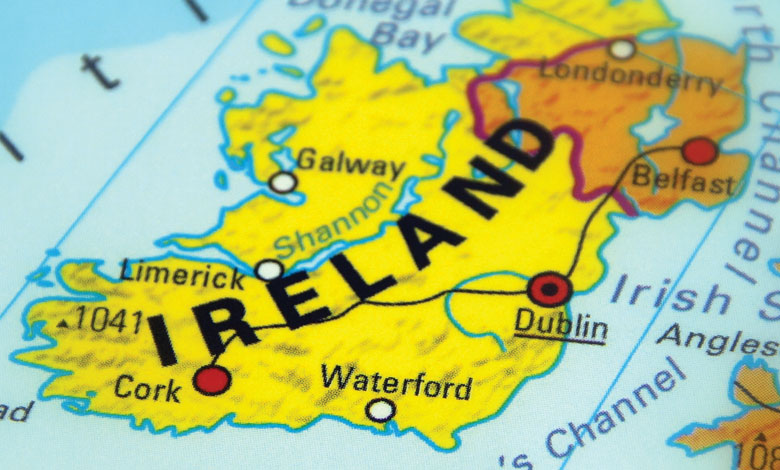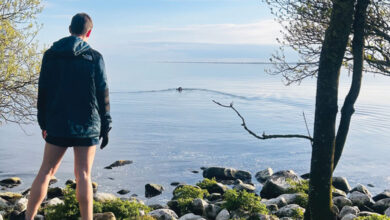New macroeconomic model for Northern Ireland

GDP growth in Northern Ireland is expected to average around 1.2 per cent per annum over the medium term, higher than in Britain but lower than the Republic of Ireland, research by the Economic and Social Research Institute (ESRI) has found.
In the absence of an up-to-date model for the Northern Ireland economy, a new macroeconomic model (an analytical tool to measure the impact of policy changes and economic shocks, as well as produce economic projections) developed by the Economic and Social Research Institute (ESRI) offers the ability to produce tailored forecasts and simulate the impact of various policies and shocks, fostering a nuanced understanding of Northern Ireland’s economy within the broader all-island context.
Northern Ireland has historically underperformed relative to both the Republic of Ireland and UK regions, with low productivity cited as a key factor.
By retaining frictionless trade with the EU while maintaining access to the UK market, the region has opportunities to strengthen its economic performance. The ESRI’s new model is tailored to account for these dynamics, offering insights into how policymakers can navigate this dual framework to drive sustainable growth.
According to the ESRI report, productivity challenges stem from lower levels of private sector investment, limited export intensity, and a smaller share of highly educated workers compared to the Republic.
Explaining the model
- Integrated framework: The model connects Northern Ireland’s economy to those of Ireland, the UK, and the global economy through the NiGEM platform. This integration ensures that simulations account for cross-border trade, investment, and policy links.
- Policy and shock analysis: The model enables the examination of a range of scenarios, such as tax adjustments, interest rate changes, and external shocks like global energy price fluctuations. By simulating these scenarios, policymakers can better understand their potential economic impacts.
- Baseline forecasting: The model provides medium-term projections, including GDP growth, inflation, unemployment, and disposable income trends. For example, GDP growth in Northern Ireland is projected to average 1.2 per cent annually over the medium term, which is lower than the Republic but slightly above the broader UK average.
- Focus on investment: The model highlights the critical role of private sector investment in addressing Northern Ireland’s productivity challenges. Simulations suggest that higher public investment, funded by mechanisms such as increased block grants, can have a positive and sustained impact on economic output.
Growth and stability
Northern Ireland’s GDP growth is forecast to stabilise around 1.2 per cent annually, with real personal disposable income also recovering post-pandemic. Inflation, after peaking in 2022, is expected to remain low at an average of 2.4 per cent annually.
While these trends signal a period of stabilisation, they also underscore the need for strategic investments to spur long-term growth.
Cross-border dynamics
The model underscores the significant economic interdependence between Northern Ireland and Ireland. For instance, the Republic accounts for over 50 per cent of Northern Ireland’s exports, excluding those to Britain.
Positive economic factors in the Republic, such as increased consumption or export growth, yield measurable benefits for Northern Ireland. Enhancing cross-border collaboration, particularly in services trade, presents untapped potential for mutual growth.
Policy simulations
A notable feature of the model is its ability to evaluate fiscal policy changes. For instance, simulations show that increasing income tax rates in Northern Ireland, if paired with strategic reinvestment in public infrastructure, can drive long-term economic gains.
Conversely, higher consumption spending yields less pronounced and temporary benefits. These findings provide clarity on how policy choices affect economic outcomes.
Energy and global shocks
The model’s simulations reveal the vulnerabilities of Northern Ireland’s economy to global energy price shocks. In scenarios of rising oil and gas prices, short-term inflation spikes are followed by a gradual recovery in output and investment.
This insight highlights the importance of energy diversification and investment in renewable infrastructure to mitigate future risks.
Implications for policymakers
Utilising the new model, there are three main factors for local policymakers to consider when determining future economic policy:
1. Boosting private investment: Encouraging private sector investment is essential for addressing productivity deficits. The ESRI asserts that policies that reduce the cost of capital and foster innovation – such as targeted tax incentives or enhanced infrastructure spending – can stimulate business activity.
2. Enhancing cross-border collaboration: Strengthening economic ties with Ireland, particularly in services trade and cross-border labour mobility, can unlock significant opportunities. Addressing logistical and regulatory barriers, while leveraging shared infrastructure, will be critical.
3. Maximising policy levers: The model illustrates the long-term benefits of public investment over consumption spending. To maximise prosperity within the ESRI’s framework, policymakers could prioritise investments in sectors with high multiplier effects, such as education, healthcare, and green energy.
The ESRI’s model is a key strategic insight into how Northern Ireland can reform its economic policy to account for the increased role of north-south trade in the region’s economy.
Adele Bergin, an author of the report and an associate research professor at the ESRI, says: “The newly developed model can provide key insights into the impacts of potential shocks and policy changes. It provides a more joined-up framework that enhances the capacity to consider economic shocks and policy choices that impact Northern Ireland, Ireland, the all-island economy, the UK and the international economy.”
Reacting to the report, Minister for the Economy Conor Murphy MLA said: “This is a robust new model that will help us better understand and reap the benefits of the all-Ireland economy.
“It will inform our decision-making in developing all-Ireland clusters in high-productivity sectors and emerging technologies. It will help us assess the operation of the Windsor Framework and maximise the benefits of dual market access.
“In an uncertain world, the research report will provide our policy makers with further tools to assess any future economic shocks and policy changes.”





